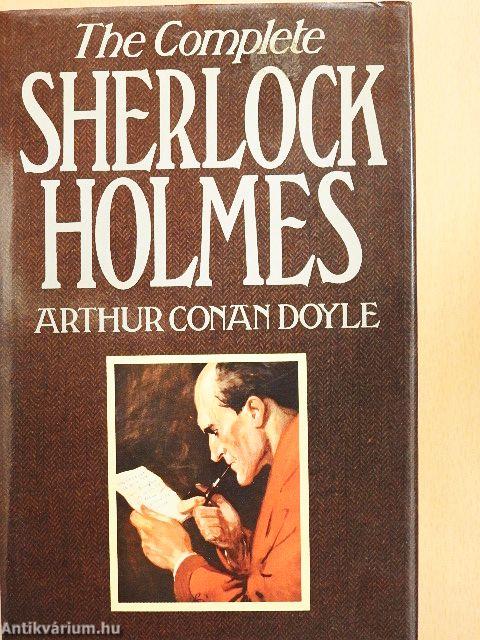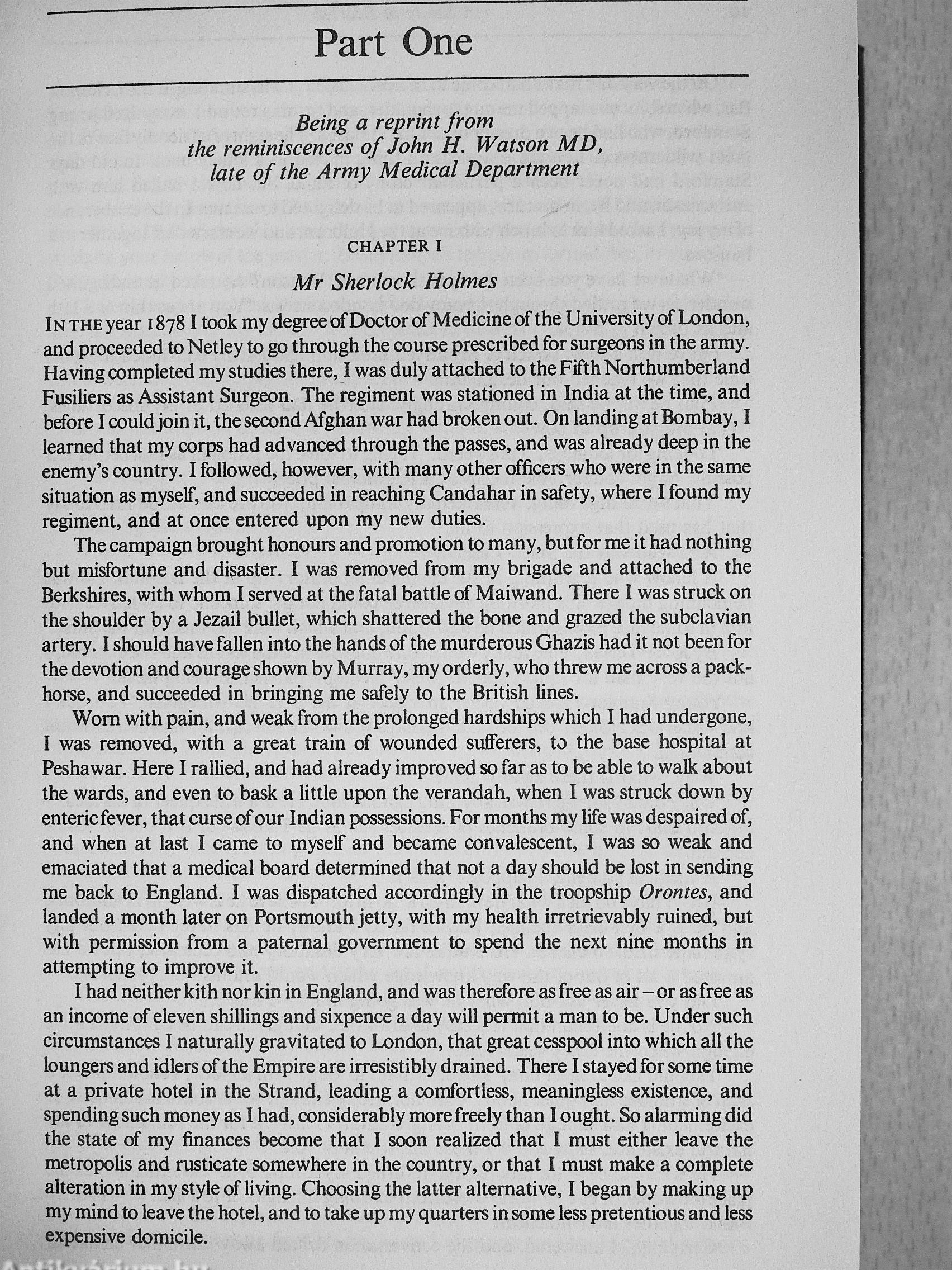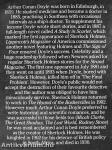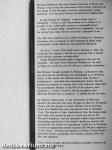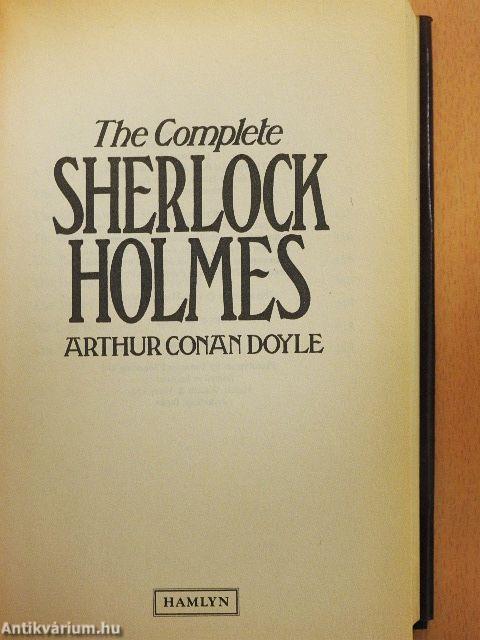1.104.039
kiadvánnyal nyújtjuk Magyarország legnagyobb antikvár könyv-kínálatát

VISSZA
A TETEJÉRE
JAVASLATOKÉszre-
vételek
The Complete Sherlock Holmes
| Kiadó: | Hamlyn Publishing Group Ltd |
|---|---|
| Kiadás helye: | Twickenham |
| Kiadás éve: | |
| Kötés típusa: | Fűzött kemény papírkötés |
| Oldalszám: | 1.083 oldal |
| Sorozatcím: | |
| Kötetszám: | |
| Nyelv: | Angol |
| Méret: | 20 cm x 14 cm |
| ISBN: | 0-600-38555-8 |
naponta értesítjük a beérkező friss
kiadványokról
naponta értesítjük a beérkező friss
kiadványokról
Előszó
TovábbFülszöveg
Arthur Conan Doyle was born in Edinburgh, in 1859. He studied medicine and became a doctor in 1885, practising in Southsea with occasional intervals as a ship's doctor. To supplement his income Doyle wrote short stories, and in 1887 a full-length novel called A Study in Scarlet, which marked the first appearance of Sherlock Holmes. Lippincott's Magazine of America commissioned another novel featuring Holmes and The Sign of Four ensured Doyle's success. Celebrity and a huge readership followed when Newnes asked for
regular Sherlock Holmes stories for the Strand Magazine. The first one appeared in July 1881 and they went on until 1893 when Doyle, bored with Sherlock Holmes, killed him off in The Final Problem'. However, Doyle's public would not accept the destruction of their favourite detective
and the author was obliged to have him miraculously survive. Sherlock Holmes returned to work in The Hound of the Baskervilles in 1902. However much Arthur Conan Doyle preferred to write... Tovább
Fülszöveg
Arthur Conan Doyle was born in Edinburgh, in 1859. He studied medicine and became a doctor in 1885, practising in Southsea with occasional intervals as a ship's doctor. To supplement his income Doyle wrote short stories, and in 1887 a full-length novel called A Study in Scarlet, which marked the first appearance of Sherlock Holmes. Lippincott's Magazine of America commissioned another novel featuring Holmes and The Sign of Four ensured Doyle's success. Celebrity and a huge readership followed when Newnes asked for
regular Sherlock Holmes stories for the Strand Magazine. The first one appeared in July 1881 and they went on until 1893 when Doyle, bored with Sherlock Holmes, killed him off in The Final Problem'. However, Doyle's public would not accept the destruction of their favourite detective
and the author was obliged to have him miraculously survive. Sherlock Holmes returned to work in The Hound of the Baskervilles in 1902. However much Arthur Conan Doyle preferred to write historical and scientific romances, and he was successful in those fields too (Micah Clarke, The Great Shadow, The Lost World, Rodney Stone) he was most acclaimed and is best remembered
as the creator of Sherlock Holmes. He was knighted in 1902 for his defence of British policy in South Africa, and died in 1930.
Sherlock Holmes is the most famous detective in fiction. Dr Watson, who relates the adventures of his friend, tells how he first heard of him through a mutual acquaintance, young Stamford, after the good doctor returned from Afghanistan:
'[/ am\ looking for lodgings,' I answered \in reply to Stamford]. 'Trying to solve the problem as to whether it is possible to get comfortable rooms at a reasonable price.'
'That's a strange thing,' remarked my companion, 'you are the second man today that has used that expression to me.'
The 'first man' proves to be a fellow working in a chemical laboratory who is anxious to find someone to share some comfortable rooms which are too much for his purse.
'By Jove!' I cried; 'if he really wants someone to share the rooms and the expense, I am the very man for him. I should prefer having a partner to being alone.'
Young Stamford looked rather strangely at me over his wineglass. 'You don't know Sherlock Holmes yet,' he said; 'perhaps you would not care for him as a constant companion.'
But Watson, though puzzled by Holmes, is pleased by him . too and soon he and Holmes are established at 22 iB Baker Street. A few weeks later Watson learns what Holmes's profession is - and finds him uncommonly certain that his powers are superior to anyone else's. His irritation fades after he accompanies Holmes to the first of his famous cases (related in A Study in Scarlet) and he recognizes that Sherlock Holmes has no superior - if indeed he has any peer.
Dr Watson relates most of | the adventures of Sherlock Holmes. He describes the cases brought to them by distracted clients, and the manner in which Holmes solves mysteries which have baffled the most experienced men at Scotland Yard. The detective's lean, clean-shaven face, his famous pipe and violin, the cocaine he uses to soothe his nerves; Dr Watson's simplicity, and the questions which bring forth the fascinating expositions of his friend's deductive powers; the comfortable life which two 'gentlemen' could live in Victorian London on apparently modest incomes (Dr Watson admits to i i/6d a day) - all these are features of Arthur Conan Doyle's immortal stories, as popular now nearly a century after the first one appeared.
This volume presents Sherlock Holmes complete, between the covers of a single book. Vissza



